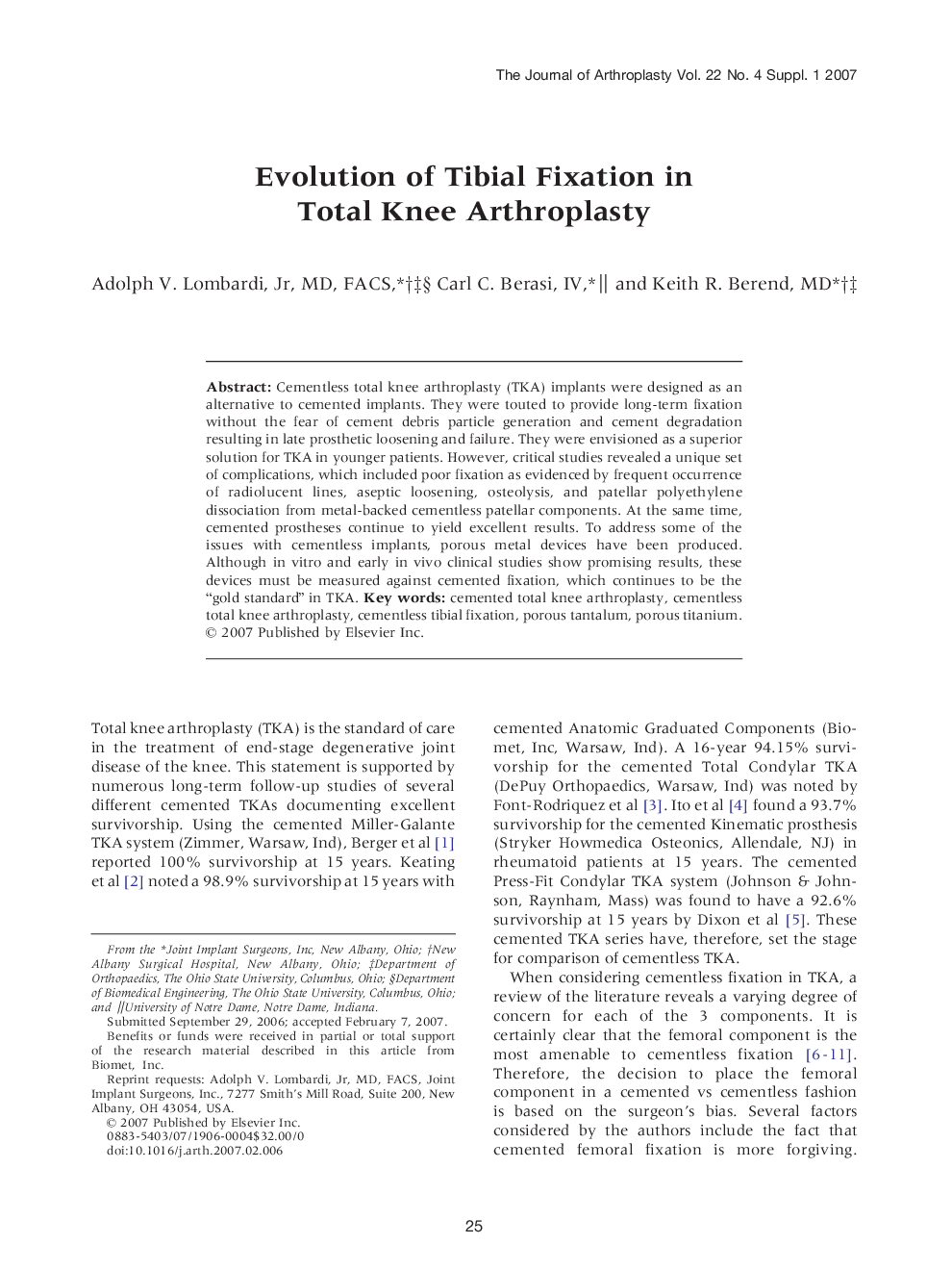| Article ID | Journal | Published Year | Pages | File Type |
|---|---|---|---|---|
| 4063882 | The Journal of Arthroplasty | 2007 | 5 Pages |
Cementless total knee arthroplasty (TKA) implants were designed as an alternative to cemented implants. They were touted to provide long-term fixation without the fear of cement debris particle generation and cement degradation resulting in late prosthetic loosening and failure. They were envisioned as a superior solution for TKA in younger patients. However, critical studies revealed a unique set of complications, which included poor fixation as evidenced by frequent occurrence of radiolucent lines, aseptic loosening, osteolysis, and patellar polyethylene dissociation from metal-backed cementless patellar components. At the same time, cemented prostheses continue to yield excellent results. To address some of the issues with cementless implants, porous metal devices have been produced. Although in vitro and early in vivo clinical studies show promising results, these devices must be measured against cemented fixation, which continues to be the “gold standard” in TKA.
